
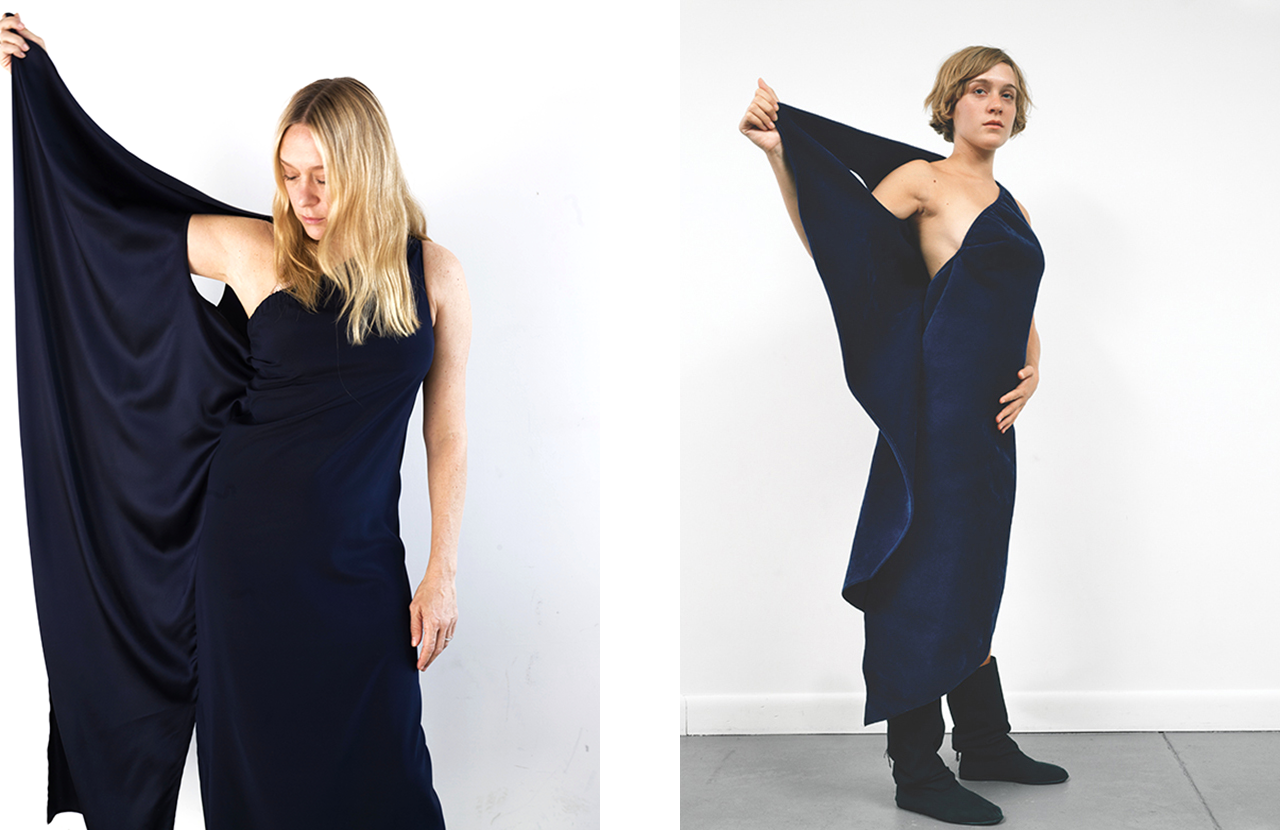
In Back to Zero, a collection of portraits of creatives wearing Zero + Maria Cornejo re-editions published by Dashwood Books on the occasion of the cult New York label’s 25th anniversary, Chloë Sevigny appears twice in the same Chloe One dress, an asymmetrical midi wrap silhouette featuring a one-shoulder neckline and draped panel with a single armhole. The actress, director, and fashion maven’s blonde waves are different lengths in the two photos and the new dress, worn on the book cover, is cut from sustainable silk charmeuse while the 1998 original was made from an upcycled Kmart poly-foam blanket. But otherwise the two photos taken a quarter century apart are practically indistinguishable. That’s the thing about Maria Cornejo’s architectural designs and the women who wear them: They always look strikingly original.
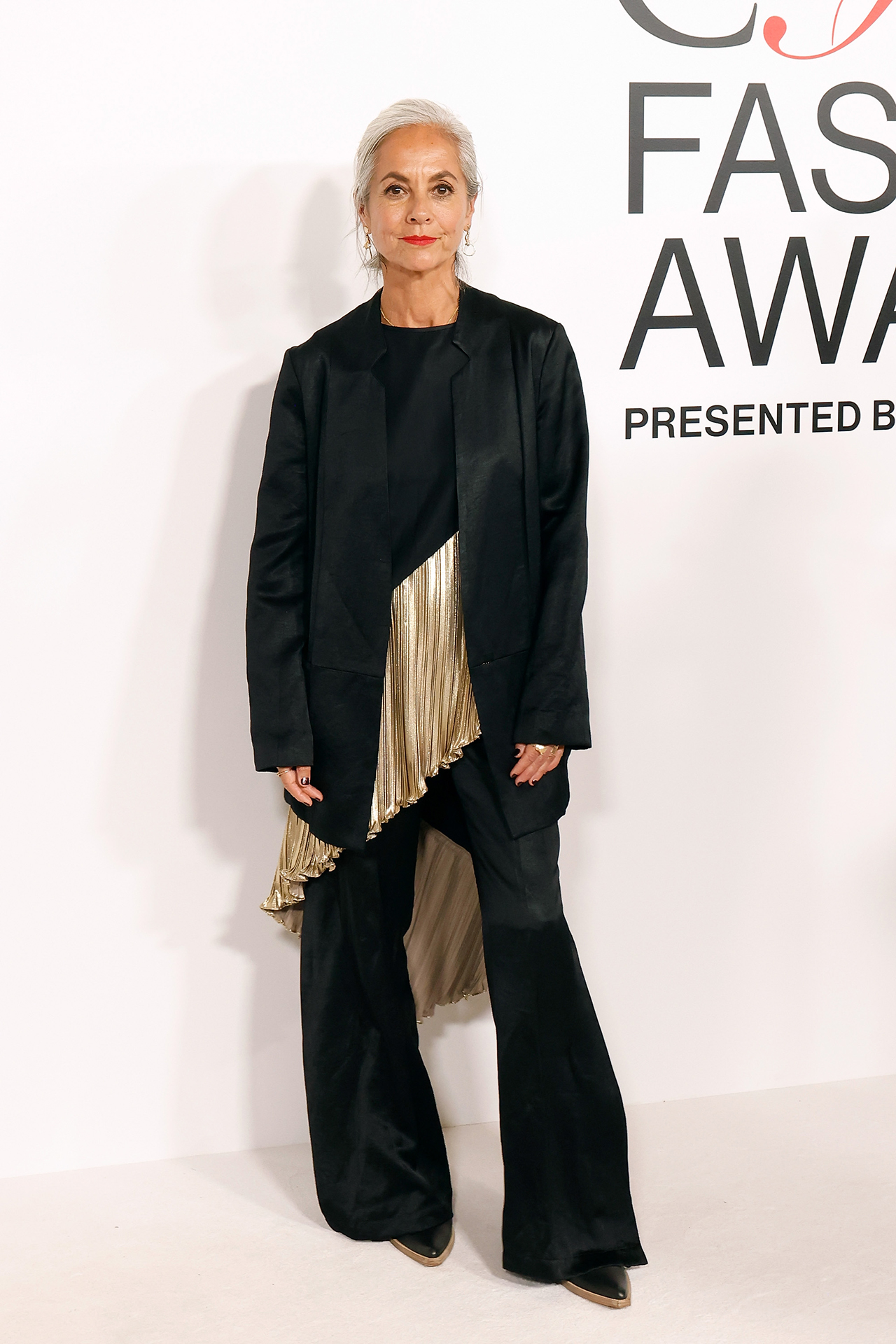
The afternoon we meet at Cornejo’s design studio behind her Bleecker Street store, it’s just a few days before the 2023 edition of the Council of Fashion Designers of America Awards where she will receive the Geoffrey Beene Lifetime Achievement Award, and her phone is constantly buzzing. Cornejo’s 25-year-old son, Jo-kel Cornejo Borthwick, who models a Circle top from the year of his birth in Back to Zero, has just landed from Paris where he’s now working as a creative director. The 15 subjects in Back to Zero—who also include visual artists Silvina Arismendi and Ariel Steinbach and architect Bella Guinness—were all photographed by Cornejo’s ex-husband and longtime creative collaborator Mark Borthwick.

Cornejo is dressed all in black in a pair of her effortlessly cool boy-cut pants and a loose-fitting Merino wool sweater. “This is from years ago, I’m wearing vintage,” she tells me with a laugh. The subtext being that she’s been championing sustainability and timeless design since long before Gen Z thought it was cool to do so. Cornejo is a founding member of the CFDA’s Sustainability Committee, and Zero + Maria Cornejo has been eco-oriented since day one. “I always say I hope my clothes make good heirlooms,” Cornejo says. “Pass them on, share them.” She launched the brand in 1998 from a bijoux shop on Mott Street, where she’d hang a few pieces at a time on a rack and see what customers responded to. Many of her fabrics were upcycled, including the aforementioned blankets as well as reclaimed fleece, and garments were cut by hand to reduce waste.
I always say I hope my clothes make good heirlooms. Pass them on, share them.
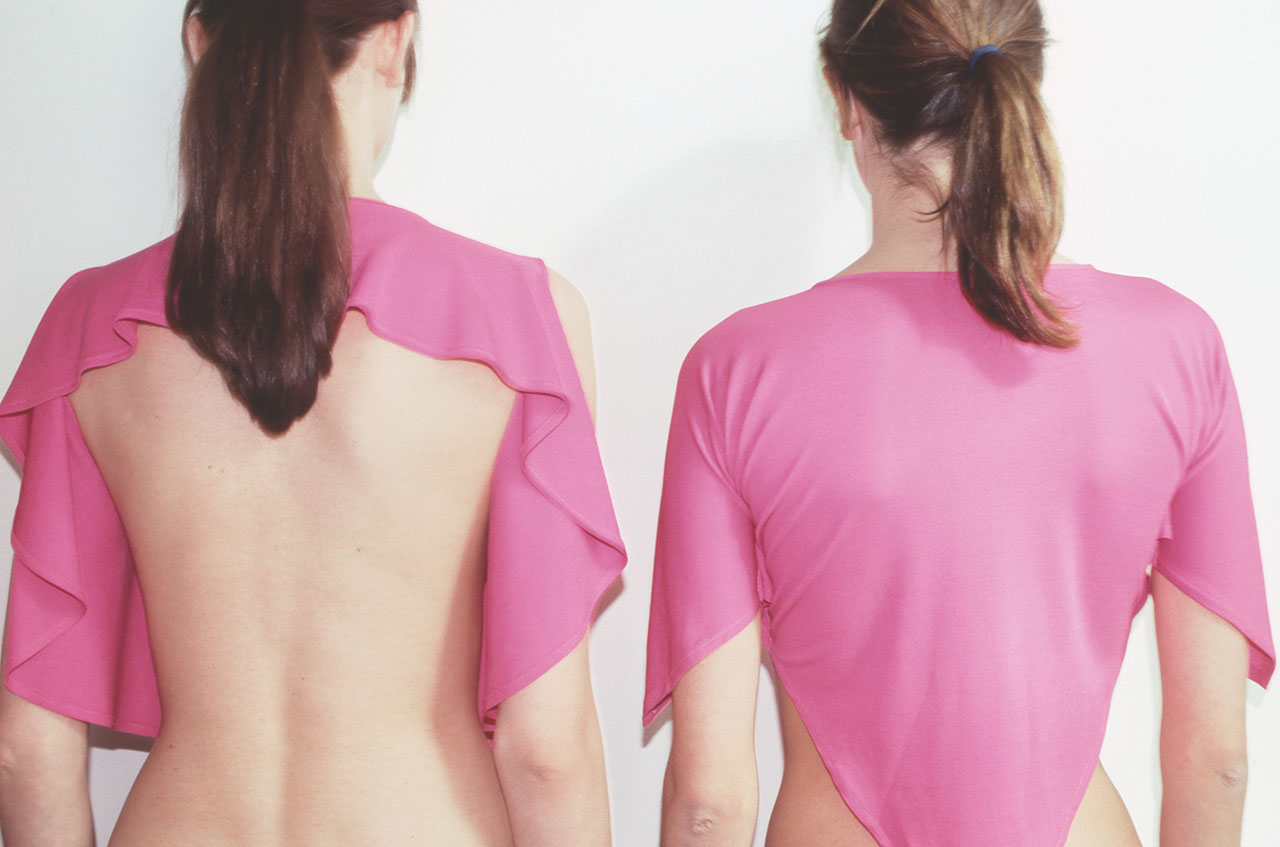
Then as now, Cornejo kept her focus on simple geometric shapes like circles, squares, triangles, and rectangles. “I always liked the idea of poking holes in pieces of fabric and seeing how they’re going to drape,” she says, explaining the origin of iconic styles like the open back Triangle top (Spring/Summer 1998) and Cut Out Triangle dress with an isosceles slice above the waist (Spring/Summer 2002). Cornejo first tried her hand at design by knitting doll clothes with her grandmother in her native Chile, where she lived until age 12 when her parents sought political asylum in the United Kingdom following Pinochet’s coup d’état. Her mother died two years after their arrival in Manchester, England, and at age 15 Cornejo decided to concentrate in arts rather than sciences because it seemed more comfortable. “It’s weird because I’m quite mathematical and I always thought that I was actually not good at math,” she reflects.
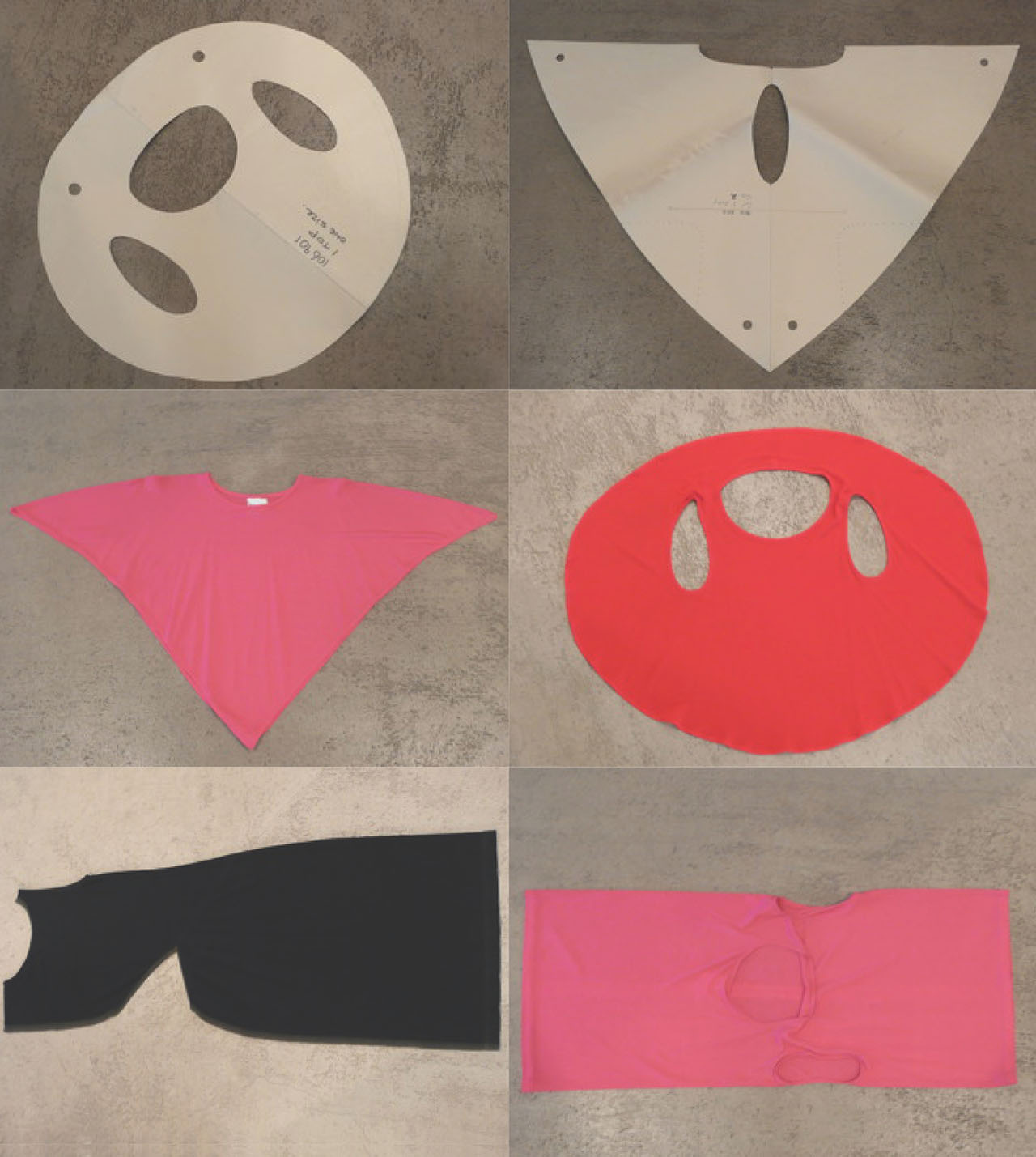
At her first store, Cornejo had a team of three patternmakers in the back who could make clothes on demand and thus avoid overproduction. She had been on the other side: After selling her 1983 Ravensbourne University graduate collection to a London boutique where Chrissie Hynde and Iggy Pop shopped, she launched a wildly successful line with her then-boyfriend John Richmond and had more than 100 international stockists plus 20 Richmond/Cornejo stores in Japan by the time she was 23. Cornejo and Richmond parted ways in 1987, with Cornejo going on to work in the Paris fashion trenches for several big brands. A decade later when she decided to go solo in New York she resolved to do things differently. “I wanted to just do a direct to consumer line, because you could control what you made and when you made it,” Cornejo says.
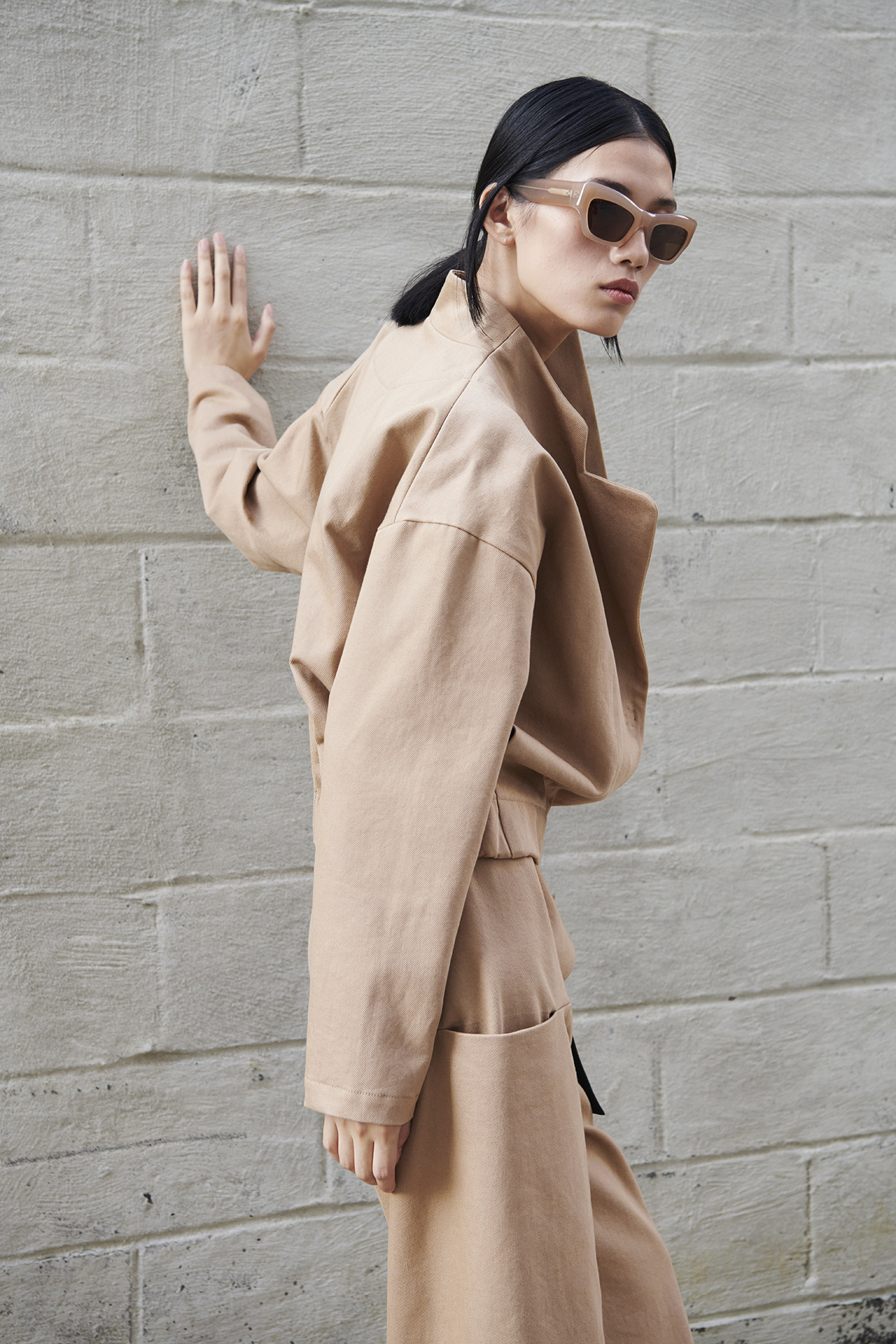
Cornejo couldn’t keep all retailers at bay forever. Barneys and Colette came calling; the latter famously promised her all of its windows during Paris Fashion Week one season if she would agree to sell the label there. Zero + Maria Cornejo is now carried in 38 small independent boutiques in 22 states plus 18 international points of sales—still relatively tight distribution for a label of its maturity. As she has scaled, Cornejo has insisted on manufacturing at least 85 percent of the collection locally in New York’s Garment District. “I saw that you would have to ship a piece of clothing all over the place to get it made,” she says. “That just doesn’t make sense because being sustainable is also about minimizing processes.” Cornejo is also resolute about upcycling leftover fabrics from past collections wherever possible and sourcing responsible textiles like organic cotton, forest-friendly viscose, and recycled cashmere when new materials are required.
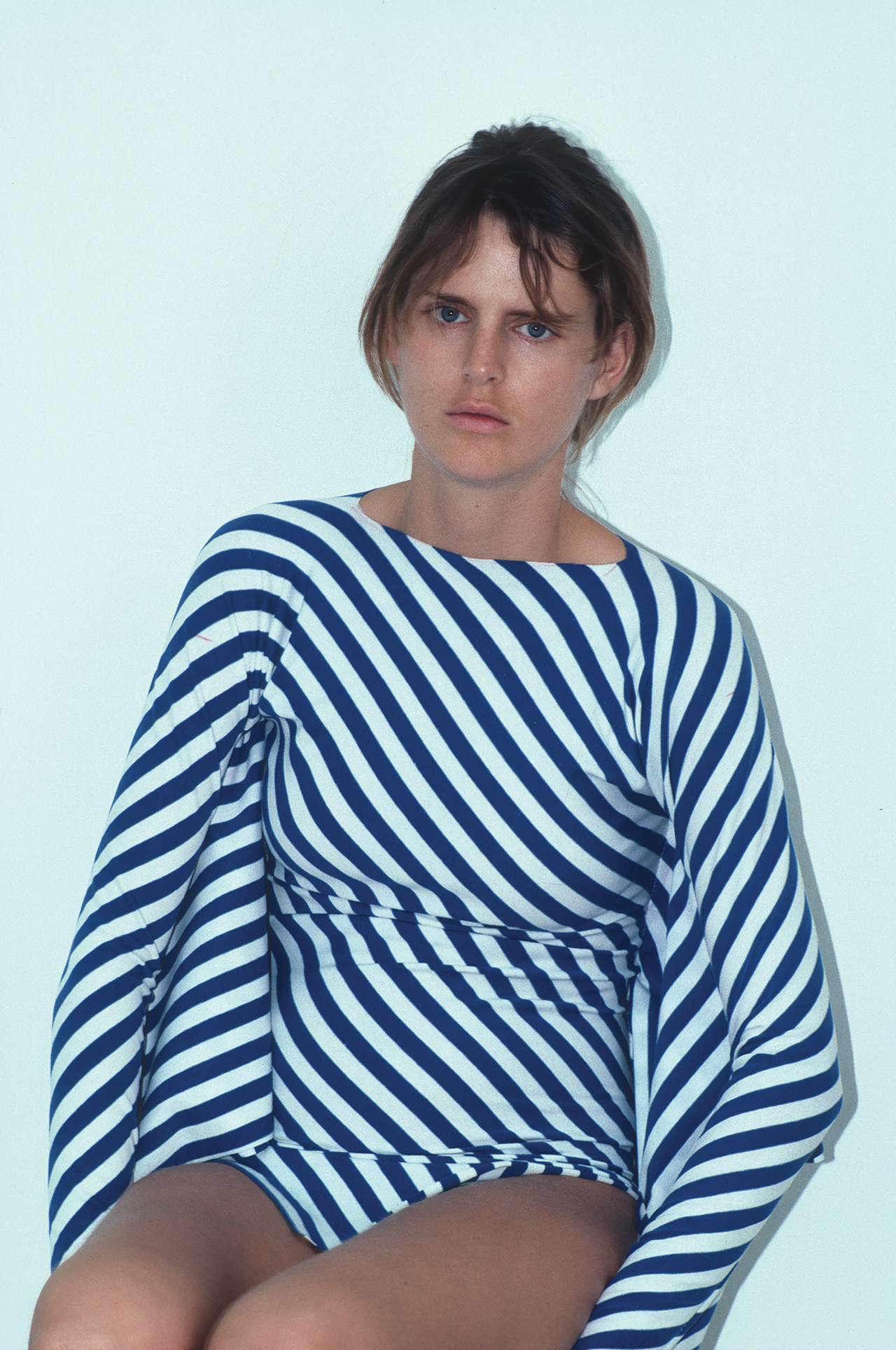
Paging through Back to Zero, Cornejo reminds me that she was one of the first designers to cast her friends in shows and lookbooks instead of professional models. “I don’t surround myself with supermodels, I surround myself with all sorts of creative people,” she says. Stella Tennant, she acknowledges, is a notable exception, but the two had bonded over their English upbringing and Tennant’s having learned to speak Chilean Spanish from her godmother. As for what has enabled her to develop a loyal fan base of other like-minded creatives? “I think what they gravitate towards is the fact that as a woman, I know how I want to feel so they can trust us to give them something that feels useful and relevant to their lives,” says Cornejo. “A lot of designers today think of their customer more as a muse than a woman.”














